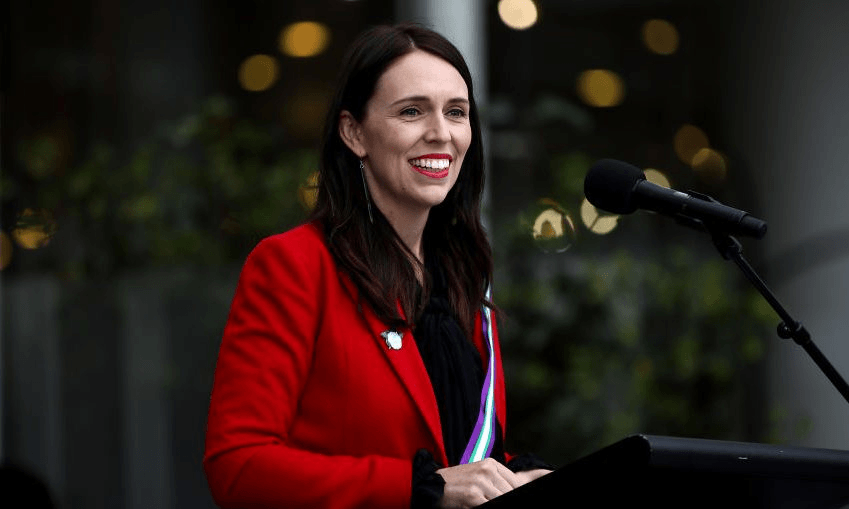An unexpectedly high growth number might herald the end of a harsh winter for the government, writes Duncan Greive.
A toxic combination of the oozing Curran-Handley wound, fear-mongering business confidence surveys and Winston Peters stumbling around like the last guest at a wedding have made this a bad week, worse month and generally infuriating winter for Jacinda Ardern.
There must be a huge gap between the sunny disposition she still manages to project publicly and how annoyed she must privately be at almost all times. Especially given that, a momentary confusion over GDP and government accounts aside, she’s so rarely the author of any of this bad government content.
Yesterday, finally, some good news. News so good, in fact, that it has the potential to chase the business confidence elephant back into its cage for a long while. GDP – bluntly, the value of all goods and services produced in an economy – for the June quarter has risen by 1%. While 1% is rarely a number to get overly excited by, in this context it’s faintly extraordinary. It’s the first time in two years that we’ve breached the 1% mark.
Since then growth has drifted gently down, and we’ve had three consecutive quarters of pretty ordinary expansion, around half a percent, since Ardern became PM. This has been part of what has made those business confidence surveys shaky (the larger chunk is likely ideological). What was different back then, when growth was strong? Mainly our government and prime minister. National and John Key: a very known quantity in which businesses had supreme confidence. The fact the new Labour-led – sorry coalition – government had flagged some employment law changes while also dealing with indifferent growth gave fuel to the narrative that there had been a substantive change to economic reality since they took power.
Which is manifestly false, but nonetheless seductive: just as known quantities get rave reviews simply for abiding, new ones are marked down by virtue of being unfamiliar.
What makes this GDP news extra compelling is that it has a good shot at being sustained. This government may have an armada of working groups on or over the horizon, but it is still chipping away at a legislative agenda. Kiwibuild, the provincial growth fund and, in time, light rail and transport changes should have the effect of a Keynesian stimulus on the economy. After years of no-to-extremely low wage increases the newly emboldened public sector is striking, stopping working or working to rule, which will inevitably settle out at larger pay increases. Add to this minimum wage hikes, pay equity claims and the inevitable flow on into the private sector and you have significantly more money rattling around the working part of the economy than we’ve had in the decade since the GFC.
This becomes self-sustaining: dollars which circulate. For much of the past decades dollars have been content to accumulate: sitting still while multiplying in the bones of houses and in the prices of shares. Our economic growth has been driven less by wage or productivity growth than phenomenal net migration. Good for education providers and the economy, but not immediately felt in the pockets of most people. These wage rises and labour-intensive infrastructure builds can’t help but travel more swiftly through the economy, and have the effect of decreasing some of the pressure the migration has created.
The irony is that this news barely rates with the public. Four hours after the announcement it sat 21st out of 24 top stories on the Stuff homepage, and was below the fold on the Herald. It will get some analysis in business sections and on news radio and 6pm bulletins and then swiftly be gone.
But 1% as a number is real growth with a symbolic threshold power thrown in too. It’s a simple number that nearly entirely depowers the remaining business confidence truthers – those that haven’t already been cowed by public reprimands from bank executives. Even the most persistent critics of Ardern and her finance minister Grant Robertson will find it hard to sustain that angle of attack under the weight of one percent.
It’s not a cure-all by any means. As I was writing this, news broke that Meka Whaitiri has become the second minister to disappear to the back benches in a matter of weeks. “The emails” is a real thing, and Winston Peters might be having a lie down, but he’ll awake again soon.
Still: GDP represents light and hope and possibility after a long winter. It means she flies out to New York and another round of inevitably dazzling headlines and appearances with a reason to be cheerful. With a rare one percenter she can wholeheartedly embrace.

